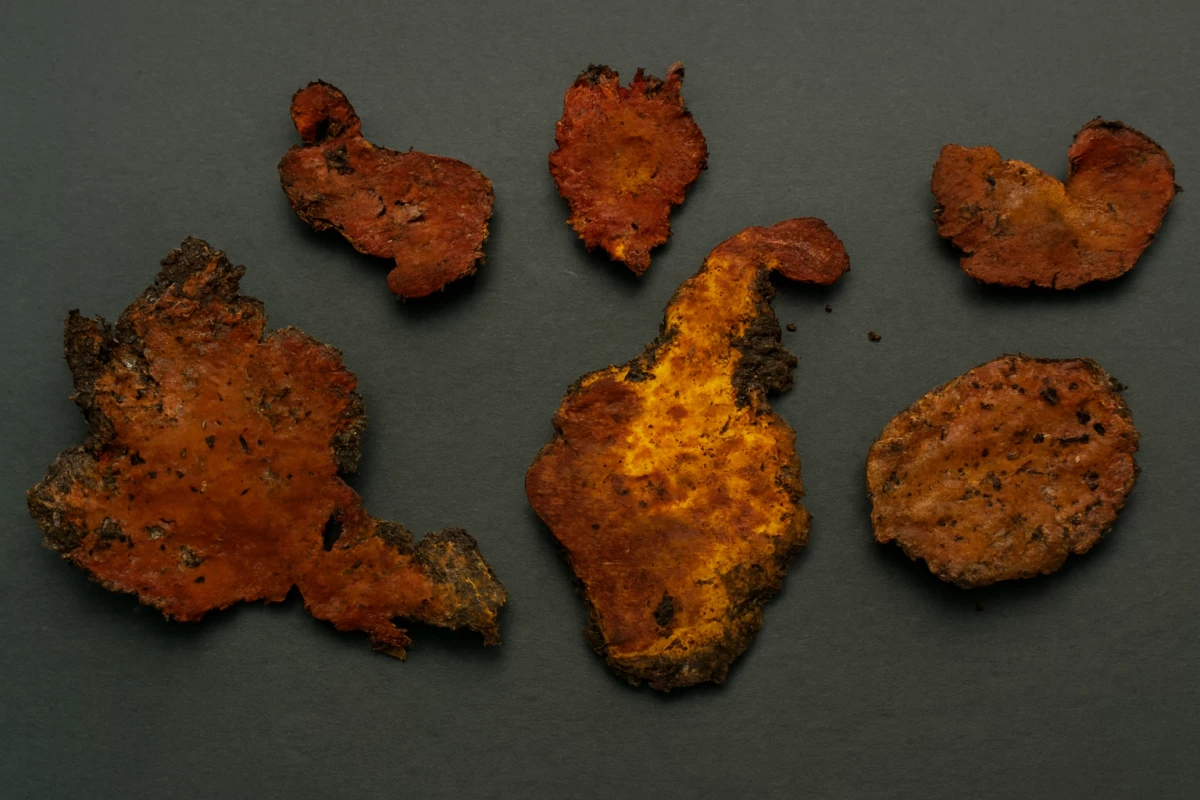A newly discovered natural compound sourced from a fungus that's historically only been found lodged on trees in Taiwan has been heralded for its pharmaceutical potential, effectively blocking inflammation signals and pressing pause on the proliferation of cancer cells.
Researchers from the National Taiwan University (NTU) and National Yang Ming Chiao Tung University have uncovered a potent new compound in a rare medicinal mushroom found only among the island's mountainous forests, which has a double-threat – fighting both cancer and inflammation. Taiwanofungus camphoratus, once known as Antrodia cinnamomea, grows exclusively inside the decaying heartwood of the endangered stout camphor tree (Cinnamomum kanehirae).
It's a new discovery from a treasured fungus that has long been used in indigenous and traditional Chinese medicine for liver problems, fatigue, poisoning and more. But because of its elusiveness in the wild, the bright orange fungus has been hard – and expensive – for scientists to get their hands on. It's now being cultivated beyond its habitat, offering greater control for scientists to stimulate the production of certain potentially beneficial compounds.
In the new study, researchers cultivated the fungus in an ammonium sulfate-rich environment to stimulate it to produce sulfated polysaccharide (SPS) molecules. These are long chains of sugar molecules that, unlike table sugar, are biologically active – so they can interact with proteins on the surface of cells, bind signaling molecules and influence immune responses.
After testing a variety of candidates, the researchers found that one, N50 F2, stood out for its biological potency. They found that N50 F2 could suppress inflammation by interrupting a specific signaling pathway, subduing the cytokines and enzymes responsible for inflammatory responses. This could potentially shield tissues from damage as a result of chronic disease inflammation.
Additional testing on a range of cancer cultures found that N50 F2 was particularly good at stopping cell proliferation in lung cancer cells. Like similar sulfated polysaccharides, N50 F2 was able to not just interrupt the natural development of these cells, but helped trigger apoptosis – or programmed cell death.
The dual action – calming runaway inflammation while restraining tumor growth – makes N50 F2 a strong candidate for new anti-cancer therapies.
The researchers found that the compound contained a distinct sugar molecule – a sulfated galactoglucan, built from glucose and galactose units – which they believe is key to its particular strong biological interaction.
“Our study demonstrates the potential of natural fungal compounds for pharmaceutical development," said Professor Chia-Chuan Chang from NTU. "With a fully controlled production and extraction process, we are optimistic about future applications in both health supplements and clinical treatments."
This work builds on a growing body of research into T. camphoratus and its medicinal potential. By pairing traditional knowledge with modern ways to cultivate the fungus, as well as using advanced biochemical extraction, the team not only uncovered N50 F2's biological potential but also demonstrated a scalable way to produce it.
Known in Mandarin as niu zhang zhi (“bull camphor fungus”), T. camphoratus has attracted a lot of attention from the scientific world in recent years. In 2004, it was reclassified from A. cinnamomea to better reflect its genetic lineage and its native habitat of Taiwan. Both names still appear in studies.
While the new research is preliminary, the researchers believe this is a promising lead for further work to map its molecular mechanisms in order to develop the compound into therapeutics for trial.
The study was published in the journal Carbohydrate Polymers.
Source: National Taiwan University via Asia Research News





